Cockroach Birth Control: A New Approach to Pest Management
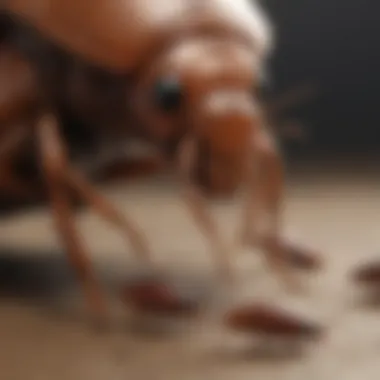
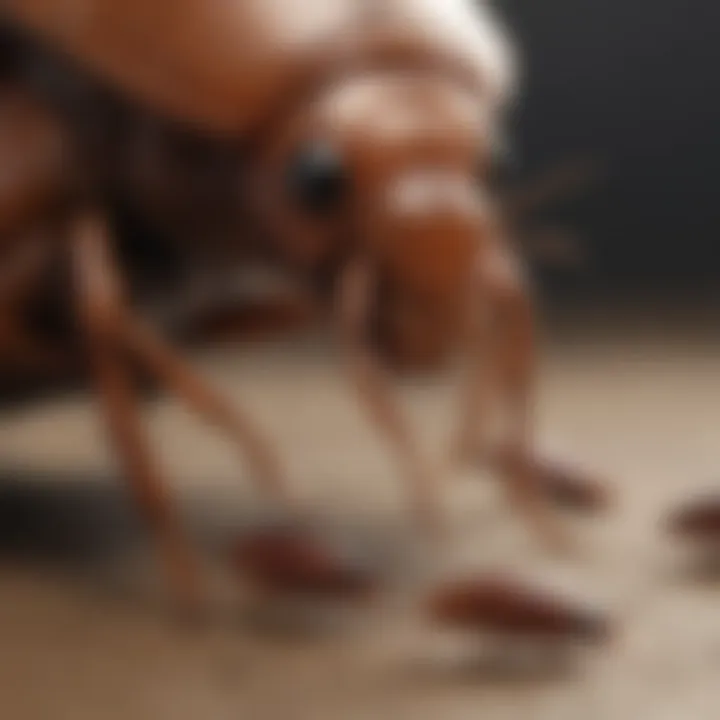
Intro
Cockroaches are resilient creatures. Their reproduction capacity poses challenges for both homeowners and pest control professionals. Understanding the biology and habits of these pests is crucial to manage and control their populations effectively. This article aims to dissect the idea of cockroach birth control, presenting it as a fundamental strategy within integrated pest management.
To effectively curb cockroach populations, it is essential to identify various species, recognize signs of infestations, and implement preventive measures. The effectiveness of these strategies can shape pest management practices significantly.
Pest Identification
Detailed Descriptions of Common Pests
Cockroaches are mostly nocturnal insects. Three species are particularly common in urban settings: the German Cockroach, American Cockroach, and Oriental Cockroach.
- German Cockroach: Small, about half an inch long, with a light brown color and two dark stripes on its back. This species prefers warm areas and is often found in kitchens and bathrooms.
- American Cockroach: Larger than the German variety, measuring up to two inches long. Its reddish-brown color and yellow band around the thorax make it easily identifiable. They thrive in warm, moist areas, often seen in basements and sewers.
- Oriental Cockroach: Dark and shiny, growing up to one inch long. They prefer cooler environments and can often be found in damp basements or under sinks.
Signs and Symptoms of Infestations
Identifying a cockroach infestation early is key to effective control measures. Common signs include:
- Feces that resemble pepper flakes or brown oval-shaped droppings.
- Shed skins, particularly from nymphs, can be found in areas where they hide.
- Unpleasant odor, often described as musty, may signal a large infestation.
- Live sightings, especially at night, indicate an active population.
"Catching the signs of cockroach infestations early can save homeowners from more extensive damage and health risks."
Prevention Strategies
Home Maintenance Tips for Pest Prevention
Maintaining a clean environment is vital in preventing cockroach infestations. Consider these strategies:
- Seal Cracks and Openings: Look for gaps in walls, doors, and windows, and seal them with caulk or weather stripping.
- Proper Food Storage: Store food in airtight containers, and do not leave any dishes unwashed overnight.
- Regularly Check Plumbing: Ensure there are no leaks. Cockroaches are attracted to moisture.
Natural Deterrents and Barriers
Some homeowners prefer natural methods to deter cockroaches. Here are a few effective options:
- Diatomaceous Earth: This natural powder can be spread in areas where cockroaches are likely to travel. It is safe for humans and pets but lethal for cockroaches.
- Essential Oils: Oil of peppermint or eucalyptus can be effective as natural repellents. Mix a few drops with water and spray in affected areas.
Treatment Options
Overview of Chemical vs. Natural Treatments
Homeowners often face the choice between chemical and natural treatments. Both methods have their unique benefits.
- Chemical Treatments: Products like boric acid or commercial insecticides can be effective in killing cockroaches quickly. These should be used with caution, especially in homes with children or pets.
- Natural Treatments: Options such as baking soda or a mixture of soap and water may take longer but are less harmful to the environment.
Step-by-Step Guides for DIY Treatments
Implementing DIY treatments can empower homeowners to tackle infestations head-on. Here’s a simple method to use baking soda:
- Gather Materials: Find baking soda and sugar. The sugar will attract the roaches while the baking soda kills them.
- Mix it Up: Combine equal parts of baking soda and sugar in a bowl.
- Placement: Put the mixture in areas where you suspect cockroach activity, such as under the sink or in cabinets.
By understanding cockroach behavior and utilizing effective birth control methods, populations can be managed efficiently. This ongoing battle requires vigilance and proactive measures from homeowners and pest control professionals alike.
Foreword to Cockroach Birth Control
Managing pest populations is crucial for maintaining a healthy living environment. Cockroaches, being resilient and prolific reproducers, pose significant challenges to homeowners and pest control professionals. Their presence can lead to health risks and create an uncomfortable living space. This article will explore innovative strategies in cockroach population control, with a focus on birth control methods that can supplement traditional pest management practices.
Understanding cockroach birth control is essential for several reasons. First, it offers an environmentally friendly approach to managing pests. Instead of relying solely on chemical treatments, which can pose risks to human health and the ecosystem, birth control strategies aim to reduce populations more sustainably.
Additionally, these methods can target specific pest species, minimizing the impact on non-target organisms. This precision is vital for integrated pest management (IPM) systems, which combine various control measures for optimal effectiveness.
Finally, knowledge of cockroach birth control empowers homeowners with practical solutions. By implementing these strategies, they can create healthier living conditions while potentially reducing the frequency of professional pest control interventions.
Defining Birth Control in Pest Management
Birth control in pest management refers to a variety of techniques that aim to control pest populations through reproductive interventions. These methods seek to decrease the birth rate of target pest species, ultimately leading to a decline in their populations over time.
The crux of these techniques lies in their ability to modify or disrupt the reproduction process, thereby limiting the number of new pests entering an environment. Some of the primary methods include hormonal disruption and sterilization.
With the increasing concern over pesticide resistance, integrating birth control methods into pest management plans is becoming more relevant. Not only do these techniques address existing infestations, they also actively prevent future ones from occurring. This proactive approach catalyzes a more comprehensive solution that is beneficial for long-term pest management.
By understanding and applying these concepts, homeowners can better manage cockroach populations in their living spaces. Active participation in pest management promotes a healthier home environment, contributing to overall well-being.
Biology of Cockroaches
Understanding the biology of cockroaches is crucial for effective population control strategies. Knowledge of their lifecycle and reproductive habits can assist homeowners and pest control professionals in choosing the most suitable methods for managing these pests. Cockroaches are resilient creatures, and their biological traits are central to their survival and proliferation. By learning about these traits, it becomes easier to devise effective interventions that can interrupt their lifecycle and reproductive patterns.
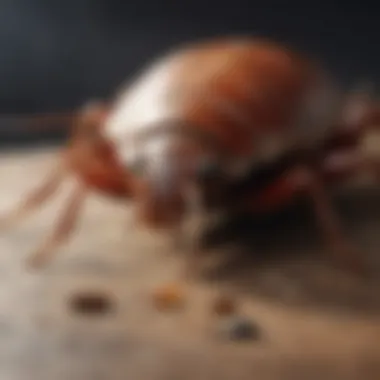
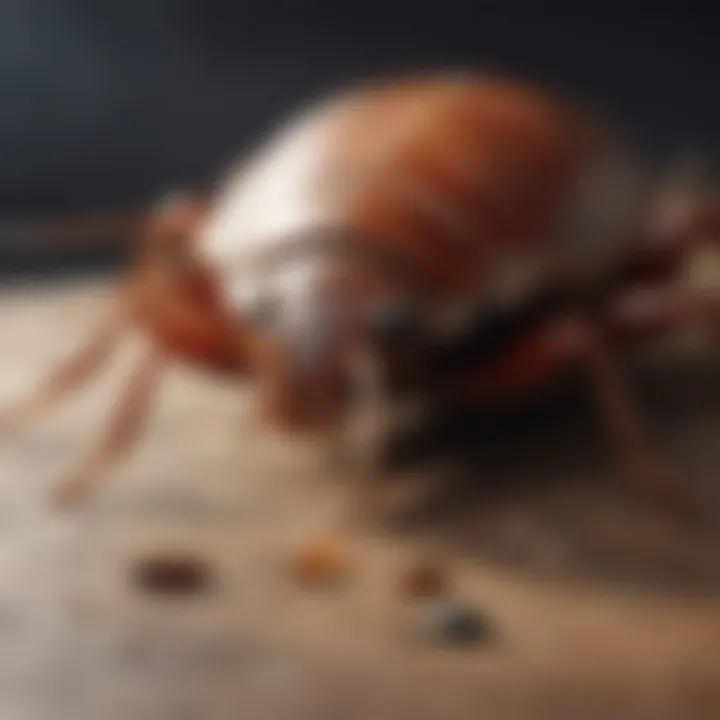
Lifecycle of Cockroaches
Cockroaches undergo a simple metamorphosis, consisting of three primary stages: egg, nymph, and adult. The lifecycle begins when a female cockroach produces an ootheca, which is a hard, protective casing that contains multiple eggs. Depending on species and environmental factors, a single ootheca can hold anywhere from 10 to 50 eggs.
Upon hatching, the nymphs emerge, resembling miniature adults but lacking wings and full reproductive capabilities. These nymphs will molt several times before reaching adulthood, a process that can take anywhere from a few weeks to several months, again depending on conditions like temperature and food availability. In optimal environments, such as warm and humid places, cockroaches mature quickly, thus accelerating the potential for population growth.
Key points regarding the lifecycle include:
- Egg Stage: lasts from a few weeks to several months
- Nymph Stage: involves multiple molts and lasts from 5 to 10 weeks
- Adult Stage: can live up to a year or more in favorable conditions
Understanding these phases is vital for implementing control methods that target specific stages, particularly before the nymphs mature into reproductive adults.
Reproductive Habits
Reproductive habits of cockroaches significantly contribute to their prevalence in domestic settings. Female cockroaches are capable of mating multiple times throughout their lives, which can span over a year. A single mating session may lead to the fertilization of several oothecae, thus compounding the problem of cockroach infestation.
Notably, the German cockroach is among the most prolific, known to produce approximately 6 to 8 oothecae throughout its lifespan. Each of these can contain many eggs. Should conditions be adequate, a few breeding pairs can quickly escalate to hundreds or thousands of cockroaches in a relatively short period.
Key factors in their reproductive habits include:
- Mating Frequency: females can mate numerous times, increasing fertilization rates
- Egg Production: high number of eggs per ootheca leads to rapid population expansion
- Survival Rates: nymphs have a good chance of survival, particularly in conducive environments
Such reproductive efficiency means that traditional control methods may be insufficient on their own. Integrating birth control strategies becomes essential to manage population sustainably over time. Without targeting these reproductive habits, efforts may yield temporary relief, but the root issue may persist.
Effective management of cockroach populations hinges not only on killing the adults but understanding their lifecycle and reproductive methods.
By comprehending the biology of cockroaches — specifically their lifecycle and reproductive habits — pest control practitioners can develop more effective and long-term strategies tailored to disrupt their growth, thereby enhancing overall pest management efforts.
Traditional Methods of Pest Control
Traditional methods of pest control play an essential role in managing cockroach populations, providing homeowners with effective means to address infestations. These techniques not only focus on immediate eradication but also pave the way for preventative measures that can deter future occurrences. Understanding these methods helps to create a balanced approach to pest management, especially for households where children and pets may be affected by harsh chemical treatments.
Chemical Treatments
Chemical treatments are often the first line of defense when dealing with cockroach infestations. These involve the use of insecticides, which can be applied in various forms like sprays, baits, and dusts. The effectiveness of these products relies largely on their ability to target and disrupt the cockroach's biological functions.
- Insect Growth Regulators (IGRs): These are a subclass of chemical treatments designed to interfere with the life cycle of cockroaches. By preventing them from maturing into reproductive adults, IGRs can significantly reduce populations over time.
- Contact Insecticides: These kill cockroaches upon contact and are effective for immediate results. However, they require direct contact and may not eliminate hidden populations.
- Baiting Systems: This method utilizes bait stations filled with attractive food and poison, targeting cockroaches where they feed. It not only kills the cockroaches that consume the bait but also facilitates secondary kill through cannibalism, as other cockroaches consume the remains of the ones that were baited.
While chemical treatments offer rapid results, they come with considerations. Prolonged use can lead to resistance, making pests harder to eliminate. Additionally, safety for non-target species is a crucial factor, especially in homes with children and pets.
Physical Exclusion Techniques
Physical exclusion techniques focus on creating barriers to prevent cockroaches from entering your home. These methods are crucial for a long-term pest control strategy and involve a more proactive rather than reactive approach.
Some effective exclusion techniques include:
- Sealing Entry Points: Inspecting and sealing gaps in walls, windows, and doors can drastically reduce the likelihood of cockroaches finding their way indoors.
- Proper Waste Management: Keeping trash in sealed containers and removing food debris will eliminate accessible food sources that attract cockroaches.
- Maintenance of Nearby Landscaping: Overgrown vegetation and the accumulation of leaves can provide shelter for cockroaches. Keeping these areas tidy helps reduce potential habitats adjacent to your home.
Implementing these exclusion methods in conjunction with chemical treatments can create a comprehensive pest management strategy. Homeowners can mitigate infestations effectively while minimizing reliance on chemicals, aligning with principles of Integrated Pest Management.
"Combining multiple strategies enhances overall effectiveness and longevity of pest control efforts."
The significance of traditional methods is clear. They serve not only to combat existing infestations but also to set the groundwork for sustainable practices that ensure a pest-free home in the future.
Emerging Birth Control Strategies
Emerging birth control strategies in cockroach management represent a notable shift in combating pest populations. Unlike traditional methods that focus primarily on extermination, these innovative approaches aim to disrupt cockroach reproduction effectively. This perspective is crucial for creating a more sustainable and long-term solution to manage infestations. By targeting the reproductive processes of these pests, these strategies may reduce population growth without resorting to harmful chemicals that might affect human health and the environment.
Hormonal Disruption Techniques
Hormonal disruption techniques are gaining traction as a promising alternative to conventional methods. This method leverages the natural hormonal systems of cockroaches to impede their reproductive capabilities. By introducing synthetic chemicals that mimic or block hormones critical for reproduction, such as juvenile hormone, it becomes possible to limit the ability of cockroaches to mature and reproduce.
Implementing these techniques offers several advantages:
- Reduced Chemical Exposure: These methods reduce reliance on traditional pesticides, making it safer for households, particularly those with children or pets.
- Target Specificity: Hormonal treatment can be designed to target cockroaches specifically, minimizing impact on non-target species and beneficial insects.
- Sustainability: By curbing reproductive rates instead of outright killing adults, the overall ecosystem balance is preserved, allowing natural predators to remain.
However, there are notable considerations to take into account. Since these techniques may require precise application and timing, homeowners may need to consult with pest control professionals. Ensuring that the right hormone imitators are utilized requires specialized knowledge that might not be readily available to the average homeowner.
Sterilization Methods
Sterilization methods present another layer of innovation in cockroach population control. This approach involves rendering cockroaches incapable of producing viable offspring. Techniques include radiation exposure, which targets male cockroaches selectively, causing mutations that prevent reproduction.
Key aspects of sterilization methods include:
- Long-Term Impact: While sterilization does not eliminate cockroach populations immediately, it can have a sustained effect over time. Fewer breeding pairs result in significantly reduced numbers in subsequent generations.
- Non-Toxic Nature: Many sterilization techniques do not involve toxic substances, thus ensuring that treated areas remain safe for human habitation.
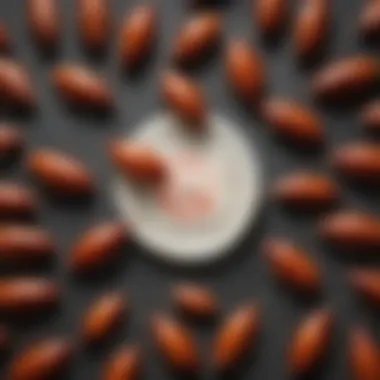

Challenges do exist with sterilization methods. Among them is the need for precise delivery systems to ensure effectiveness. Also, the potential for mutation leading to some cockroaches becoming resistant to sterilization cannot be neglected.
In summary, emerging birth control strategies like hormonal disruption and sterilization methods offer a fresh perspective in cockroach management. By focusing on the reproductive aspects of these pests, homeowners can find safer, more sustainable ways to defend their living environments. As these methods evolve, integrating them within broader pest management plans could yield significant benefits.
Integration into Pest Management Plans
Effective management of cockroach populations requires a strategic approach. One critical aspect of this strategy is the integration of various methods into a cohesive pest management plan. This integration allows homeowners and pest control professionals to maximize effectiveness and minimize the return of cockroaches.
Importance of Integrated Pest Management
Integrated Pest Management (IPM) represents a holistic approach to controlling pests while minimizing risks to people and the environment. IPM emphasizes prevention, monitoring, and control. It enables stakeholders to analyze the specific conditions that foster cockroach infestations and address them systematically. By understanding the biology and behavior of cockroaches, individuals can create environments less conducive to their survival and reproduction.
Key elements of IPM include:
- Monitoring: Regular inspections help identify infestation levels and effective action points.
- Prevention: Identifying entry points and reducing food sources is essential in discouraging cockroaches.
- Control Measures: This includes both traditional methods like chemical treatments and innovative birth control strategies.
Utilizing IPM ensures that each method works in support of the others. For instance, employing birth control techniques can significantly reduce reproductive rates, while preventive measures aim to address conditions that allow pests to thrive.
Combining Methods for Efficacy
Combining various pest control methods often leads to greater success in managing cockroach populations. Relying solely on one type of control can result in pests developing resistance or creating new populations. Therefore, a diverse approach is vital.
Several methods can be effectively combined:
- Chemical Treatments with Birth Control: While chemicals eliminate existing populations, birth control strategies can reduce future generations.
- Physical Exclusion with Monitoring: Combining physical barriers with regular monitoring ensures that any new infestations are addressed swiftly.
- Educational Efforts with Community Initiatives: Providing information and resources to the community aids in collective efforts to minimize cockroach populations.
"A comprehensive approach not only addresses immediate issues but also sets the stage for long-term management success."
Effectiveness of Birth Control in Pest Control
The exploration of birth control methods within pest management reflects a strategic effort to address the cockroach problem that many households face. By understanding the effectiveness of these methods, homeowners and pest control professionals can make informed decisions about their pest management strategies. Birth control techniques offer a proactive approach that aims not only to reduce the current population but also to curb future infestations.
By integrating birth control methods into broader pest management practices, one can potentially limit the need for more reactive, chemical-based interventions. This shift helps foster an ecosystem approach, which is essential for sustainable pest control. The key advantages of implementing birth control methods in pest control include reducing reliance on harmful pesticides, ensuring safer home environments, and contributing positively to ecological health.
Case Studies and Evidence
Numerous case studies reflect the effectiveness of birth control measures in controlling cockroach populations. For example, researchers have utilized hormonal disruption techniques, which involve altering the natural reproductive hormones of cockroaches. One study demonstrated a significant decline in the reproductive capacity of certain cockroach strains when exposed to synthetic hormones. This method resulted in slower population growth, allowing for more manageable control strategies.
Additionally, sterilization practices have shown promise in real-world applications. A pest control company in a metropolitan area adopted sterilization approaches on a commercial scale. Over a period of six months, they observed a notable reduction in the cockroach population, leading to a 70% decrease in infestation reports from client buildings. These examples illustrate how birth control, when executed properly, can yield tangible results and lessen the perceived urgency of conventional chemical treatments.
Limitations and Challenges
Despite the promising results, limitations and challenges persist in implementing birth control methods. One prominent issue involves the variability in effectiveness. Factors such as species differences among cockroaches and environmental conditions can affect outcomes. For example, not all cockroach species respond the same way to hormonal treatments, leading to inconsistent results across populations.
Another challenge lies in the public perception of such methods. Homeowners may favor traditional pest controls, fearing that newer methods are unproven or ineffective. Education becomes crucial in addressing these misconceptions and fostering acceptance of innovative strategies. Furthermore, ongoing research is necessary to refine these methods, ensuring they are not only effective but also economically viable for widespread application.
Addressing Myths and Misconceptions
Understanding the myths and misconceptions surrounding cockroach birth control is crucial for effective pest management. Many homeowners and pest control professionals may rely on outdated information or misunderstand the nature of these strategies. Clarifying these misconceptions helps to ensure that proper methods are utilized, leading to better outcomes in population control. Moreover, addressing myths enhances public awareness and can promote more sustainable practices in pest management.
Common Myths About Birth Control
One prevalent myth is that birth control for cockroaches is not effective. Some believe that these interventions cannot significantly reduce cockroach populations. In reality, various studies demonstrate that birth control methods, including hormonal disruption and sterilization techniques, can effectively lower reproduction rates. The goal is not to eliminate cockroaches completely but to manage their populations to a more manageable level.
Another misconception is that all birth control methods are chemical-based and harmful to the environment. Many innovative approaches to cockroach birth control utilize biological means or environmental triggers instead of traditional pesticides. For instance, hormonal methods are designed to disrupt the reproductive cycles of cockroaches without causing significant harm to surrounding ecosystems.
There is also the idea that such practices are expensive or not worth the investment. In fact, over time, using cockroach birth control can reduce long-term costs associated with frequent pest control treatments and damage repairs. Managing population levels early can save homeowners from larger infestations down the line.
Clarifying Effective Practices
To counteract these myths, it is important to present clear and effective practices in cockroach birth control. The integration of birth control methods into pest management plans requires careful planning and understanding of cockroach biology. Homeowners should consider collaborative efforts with pest management professionals who are informed and trained in these innovative strategies.
Effective practices may include:
- Researching Local Species: Understanding the specific cockroach species in the area can inform the selection of appropriate birth control methods.
- Using Hormonal Disruption: Products that mimic the hormones of cockroaches can prevent reproduction effectively. This method is often less hazardous to non-target species.
- Applying Sterilization: Methods that sterilize male cockroaches can reduce successful mating rates. This approach decreases overall population growth without using toxic substances.
- Monitoring and Evaluation: It is essential to constantly evaluate the effectiveness of chosen methods. Small adjustments based on results can make strategies more effective.
In summary, addressing myths and misconceptions about cockroach birth control not only informs better practices but also leads to more effective pest management. By promoting factual knowledge and effective methods, homeowners can achieve greater success in controlling cockroach populations without compromising environmental safety.
Environmental and Health Considerations
Understanding the environmental and health considerations surrounding cockroach birth control is crucial. The impact of pest control strategies does not end with the eradication of pests. It extends into ecological balance and community health. Effective management must prioritize methods that minimize adverse effects on surrounding systems. This section will explore the interplay between pest control practices and their broader implications for the environment and public health.
Impact on Ecosystems
Using birth control methods for managing cockroach populations can alter ecosystems significantly. Traditional pest control often relies on chemical substances, which can lead to unintended ecological consequences. For instance, the introduction of certain poisons may disrupt the food chain, affecting not only cockroach populations but also their predators. In contrast, birth control strategies——such as sterile insect techniques——aim to control populations without introducing toxins into the environment.
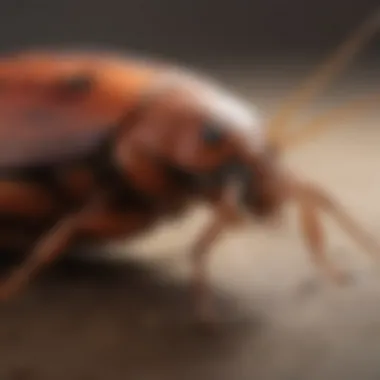
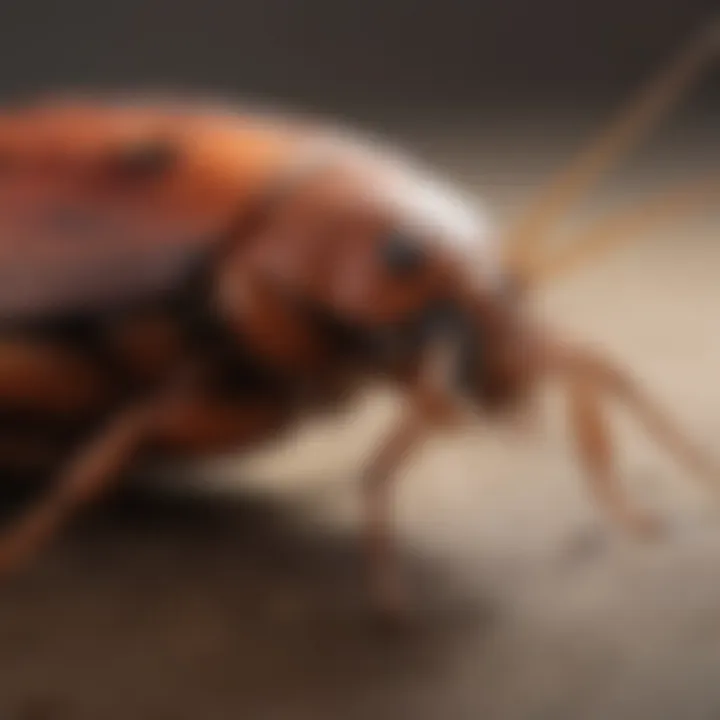
In addition to reducing chemicals in the environment, the intentional management of cockroach reproduction may promote a healthier ecosystem. By lowering cockroach numbers through birth control methods, the competition for resources among various species can stabilize. Less competition may foster biodiversity, allowing native species to thrive. This method also prevents the emergence of pesticide-resistant cockroach populations, which is a growing concern with traditional pest control strategies.
"Sustainable pest management means considering the ecosystem as a whole, not just the target pest."
Health Implications of Methods
When contemplating birth control approaches in cockroach management, health implications are paramount. Conventional methods often involve substances that are hazardous to human health. Chemical exposure can occur through inhalation, skin contact, or ingestion. Birth control methods, particularly those involving sterile insects or hormonal disruption, tend to present lower risks to human health.
It is essential to assess the health risks associated with different pest control methods. Birth control strategies generally do not pose health risks associated with toxic chemicals. Homeowners can apply these methods with reduced fear of adverse health effects on their families or pets.
Here are some key health aspects regarding cockroach birth control:
- Reduced Chemical Exposure: Homeowners benefit from reduced reliance on harmful pesticides.
- Minimized Allergens: Fewer cockroaches can lead to lower rates of allergens in the home, which is beneficial for individuals with allergies or respiratory issues.
- Public Health Concerns: Lower cockroach populations can decrease the risk of diseases that these pests transmit.
In summary, considering environmental and health implications is vital for sustainable cockroach management. The shift towards birth control methods not only protects ecosystems but also fosters a healthier living environment for homeowners.
Future Directions in Cockroach Management
The challenge of managing cockroach populations brings forward important considerations regarding future strategies in pest control. As demand for sustainable practices grows, there is increased focus on innovative solutions that are effective yet minimally disruptive to both human health and the environment. This section outlines key elements surrounding the future directions in cockroach management.
Innovations in Birth Control
Recent advancements in pest control technology demonstrate the need for more innovative methods to prevent cockroach proliferation. Birth control for cockroaches includes various strategies like hormonal disruption and genetic manipulation. These methods could potentially reduce their populations without relying heavily on traditional pesticides.
One promising innovation is the use of insect growth regulators (IGRs), which disrupt the development process of immature cockroaches. Another approach being researched is the application of genetically modified organisms that interfere with the reproductive cycle of cockroaches. Such innovations are crucial. They can significantly reduce the offspring production and ultimately lead to sustainable control of these pests.
- Hormonal treatments: Targeting the hormonal balance of cockroaches can effectively hinder their reproduction.
- Genetic engineering: This could eventually lead to populations that are unable to reproduce.
Moreover, technology like smart traps that utilize sensors can enhance monitoring and management efforts. These devices can log cockroach activity and provide real-time data, improving decision-making in pest control initiatives.
Trends in Pest Control Research
Research in pest control has evolved to pay more attention to ecological impacts. Current trends reflect a shift towards integrated approaches that combine multiple methods for effective management. The focus is on how cockroach control interventions can coexist with environmental health.
Some of these trends include:
- Eco-friendly pesticide alternatives: There is a rising interest in natural products that can deter cockroaches without adverse effects on the environment.
- Behavioral studies: Understanding cockroach behavior aids in developing targeted strategies to exploit their vulnerabilities.
- Collaboration with biologists: Working together with entomologists can yield insights that help refine control methods and enhance their effectiveness.
Ultimately, the future directions in cockroach management hinge on a commitment to research and innovation. Without these elements, managing cockroach populations in a responsible manner will represent a constant struggle for homeowners and pest control professionals alike.
"Managing cockroach populations requires an array of innovative solutions that go beyond conventional methods; adapting to the changing landscape of pest control is essential."
By placing an emphasis on these advancements and current research trends, pest management strategies will likely become not only more effective but also more responsible, marking a significant step forward in the field.
Practical Advice for Homeowners
Cockroach management at home requires understanding and action. This section gives practical advice for homeowners wanting to control cockroach populations effectively. Implementing the right preventive measures can significantly reduce the chances of an infestation. Additionally, knowing when to engage professionals for help is vital.
Preventive Measures
Preventive measures are key in stopping cockroaches before they enter homes. First, maintaining cleanliness is essential. Regularly clean floors, countertops, and areas that may gather debris.
- Seal all food in airtight containers.
- Dispose of garbage promptly and use bins with tight-fitting lids.
- Fix leaks and eliminate standing water; cockroaches need moisture to survive.
- Inspect and seal cracks and crevices in walls, floors, and foundations. Cockroaches can enter through tiny openings.
Another important strategy is to reduce clutter. Cockroaches thrive in hidden environments like stacks of old newspapers or unorganized storage areas. Homeowners should regularly declutter and create an uninviting habitat for these pests.
"An ounce of prevention is worth a pound of cure."
Relying on proactive approaches will not only lower the risk of an infestation but also make the home less appealing for cockroaches. Furthermore, homeowners can use diatomaceous earth or other pest deterrents in specific areas for extra security.
Working with Professionals
If prevention fails or if the problem escalates, contacting pest control professionals is advisable. These experts have specialized knowledge and tools not available to the average homeowner.
When selecting a pest control service, consider the following:
- Experience and Reputation: Choose professionals known for effectively managing cockroach issues. Seek reviews or recommendations from trusted sources.
- Integrated Pest Management (IPM): Ensure the company practices IPM, which combines multiple strategies for long-term success rather than relying solely on chemicals.
- Safety Considerations: Inquire about the safety of the products they use, especially if there are children or pets in the household.
Pest control services can offer tailored solutions based on the unique needs of a home. They can also educate homeowners on preventive practices after treatment, making the home less susceptible to future infestations. This collaboration creates a more comprehensive approach to cockroach management.
Implementing these practical tips can empower homeowners to take action. Through knowledge and proactive measures, the nuisance of cockroaches can be controlled effectively.
Epilogue
The topic of cockroach birth control is an essential part of effective pest management. Addressing the growing concern about roach infestations in both residential and commercial environments, the adoption of birth control strategies can lead to more sustainable outcomes. This article has explored various facets of the subject, shining light on how different methods impact cockroach populations. Understanding these strategies is critical for homeowners seeking to maintain a pest-free environment.
Summary of Key Points
- Biological Understanding: The article begins with a thorough examination of cockroach biology and their reproductive habits. These factors are crucial in formulating effective control methods.
- Traditional and Emerging Methods: We examined traditional pest control methods like chemical treatments and physical exclusion techniques, before introducing emerging strategies, such as hormonal disruption and sterilization methods.
- Effectiveness and Evidence: The article highlights case studies that demonstrate the success rates of these birth control methods. Limitations and challenges were also discussed, providing a balanced view on the potential drawbacks.
- Environmental and Health Implications: The impact of these methods on ecosystems and human health is significant. The growing concern for environmentally friendly practices has led to an increase in alternative strategies.
- Practical Guidance: Recommendations for homeowners focused on preventive measures and the importance of consulting pest control professionals to implement effective solutions.
Final Thoughts on Implementation
Implementing cockroach birth control strategies requires a nuanced understanding of both the pest's biology and the surrounding environment. Homeowners must consider multiple factors, such as the scale of infestation, the specific species of cockroaches, and potential non-target impacts on other insects. Integrating these strategies into a broader pest management plan can result in more effective and lasting outcomes.
Effective cockroach management combines various methods to control populations while minimizing health risks and environmental damage.



